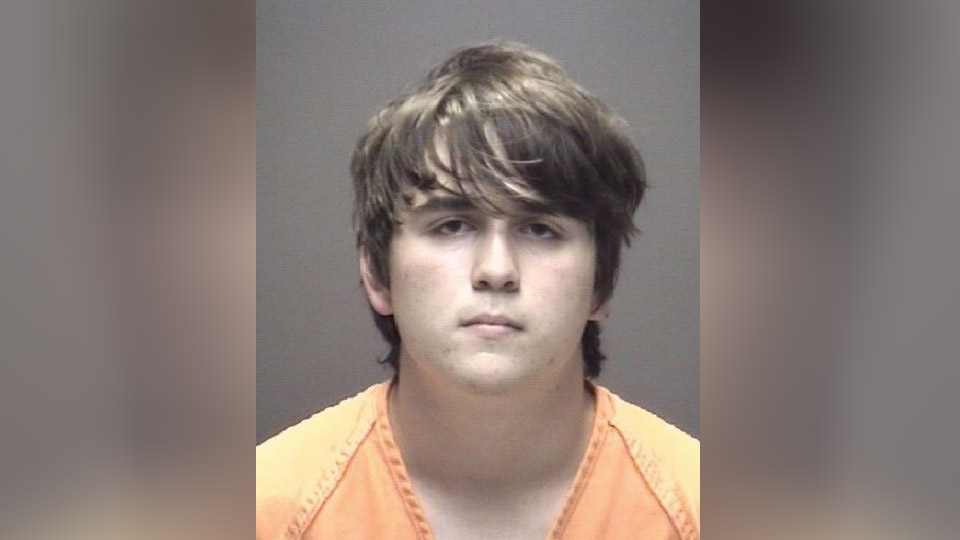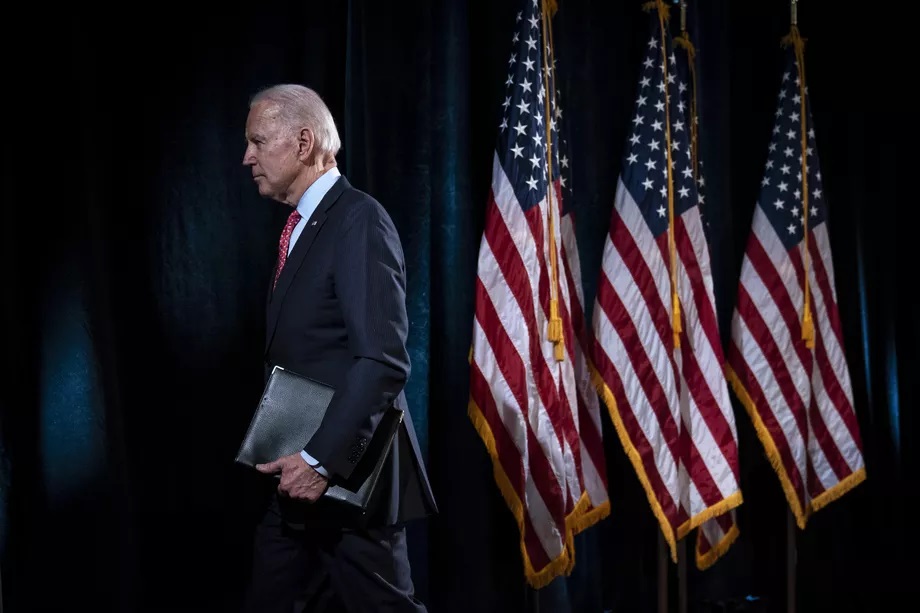Crime
Synopsis: Texas School Shooting
Published
7 years agoon

Around 7:40 a.m. CDT on May 18, 2018, Dimitrios Pagourtzis began to open fire in the art classroom at Sante Fe High School. The shooter has been taken into custody, 10 people have been fatally shot, and 13 others have been wounded.
From the perspective of those who were there
“I was sitting in my classroom and I heard very loud booms and I didn’t know what they were. I was confused but after I heard screaming, I figured out what they were, got up immediately and started to run. I almost ran out of the school but I hid instead with the other students. I was there for maybe 30 minutes I was on the phone with my mom the whole time. They found us and escorted us.” – Paige Curry (student)
“I heard people were hurt and the gunshots were from a classroom maybe three doors down. I heard five [shots] maybe. It was one boom, then another boom very loud. It wasn’t rapid.” – Paige Curry (student)
“You could smell the gunpowder that came from the gun. We were all scared because it was near us.” – Liberty Wheeler (student)
“The teachers told everybody to run after three shots were heard so we all took off and ran into the trees. Then we heard four more shots so we jumped the fence into some dude’s house and ran into a car wash. While we were sitting down trying to figure out what just happened I saw a girl who had been shot in the kneecap.” – Tyler Turner (student)
“A kid came out. He had a black-like trench coat on, a sawed-off shotgun with a pistol grip, and I seen something sharp on his chest. Then, he turned, and instead of looking our way, he just grabbed the backpack and went right back into the art room. We shut the door in our classroom, turned off all the lights, did everything we could to get the students safe. Then, the teacher actually ran and pulled the fire alarm, because we had no service to call 911 to let anyone know that there was a shooter.” – Damon Rabon (student)
‘Nobody was expecting this….nobody’
“He is a quiet boy. You would never think he would do anything like this.” – Stelios Sitaras (Greek Orthodox Priest)
“[Pagourtzis] was actually a pretty nice kid. Nobody was expecting this….nobody.” – Christopher Kurass (student)

“He’s been picked on by coaches before for smelling bad and stuff like that and he doesn’t really talk to very many people. He wears a trench coat every day and it’s like 90 degrees out here. I heard that he wore a shirt today and it said ‘born to kill,’ the shirt he was wearing, I don’t even know how the school can allow that.” – Dustin Severin (student)
“We also know information already that the shooter has information contained in his journal and cellphone that he said that not only did he want to commit the shooting, but he wanted to commit suicide after the shooting. As you probably know, he gave himself up and admitted at the time that he didn’t have the courage to commit the suicide that he wanted to take his own life earlier.” – Texas Governor Greg Abbott
Possible signs
On April 30th, 2018, Dimitrios Pagourtzis posted a photo of his shirt that said “Born To Kill” on his Facebook.
Dimitrios Pagourtzis posted numerous images of his black trench coat that he wore during the shooting, which had fascist and occultic pins/decals.
Dimitrios Pagourtzis made a Facebook post explaining the symbolism behind his pins/decals: “Hammer and Sickle = Rebellion, Rising Sun = Kamikaze Tactics, Iron Cross = Bravery, Baphomet = Evil, Cthulu = Power.”

Dimitrios Pagourtzis also posted a photo of a handgun, knife and tactical flashlight to his Instagram page.

Law enforcement also reports that the suspect posted an image of a Pentagram with the caption “dangerous days” on the Friday before the shooting.

Active shooter plan, and two armed police officers
On March 19, 2018, Sante Fe High School conducted an active shooter drill, which was hosted by the Santa Fe ISD Police Department.
“There was about 30 seconds to three minutes of straight chaos,” said Damon Rabon. While other students began to panic, Rabon and others who remembered the training they received acted upon their impulses. “Me and a couple other students were like, ‘Get in the corner, we’ve done this before, grab the desk, barricade the door. We were doing all that like we were taught to do.”
During the shooting, there were 2 armed police officers walking around the school. One officer was shot when the officer approached Dimitrios Pagourtzis, while other officers talked with Dimitrios Pagourtzis. Dimitrios Pagourtzis finally surrendered after officers talked him into surrendering. The episode of horror lasted around 30 minutes, according to witnesses and court records.
The school district agreed last fall that it would begin to arm teachers under the Texas school marshal program, which is designed to arm teachers in order to protect students.
What if teachers were armed? Could they have prevented more students from dying? If more teachers volunteer to arm themselves in states that allow these programs, some of these atrocities might be prevented in the future.
The victims
- Cynthia Tisdale (Substitute Teacher)
- Glenda Anne Perkins (Teacher)
- Sabika Sheikh (Student)
- Chris Stone (Student)
- Jared Black (Student)
- Shana Fisher (Student)
- Kimberly Vaughan (Student)
- Angelique Ramirez (Student)
- Christian Riley Garcia (Student)
- Aaron Kyle McLeod (Student)
The parents
The family of Dimitrios Pagourtzis released a statemement on May 19, 2018, saying that they are “shocked and confused” by what happened and the incident “seems incompatible with the boy we love.”
The shooter’s parents and classmates say that they saw no warning signs or any sort of trouble before the shooting.
Dimitrios Pagourtzis used his dad’s shotgun and .38 revolver.
These are the facts that have been released to the public so far, and as time goes on more will be revealed.
While evaluating all the evidence, eyewitness accounts, and stories, there is one conclusion that must be drawn from this event.
It starts in the home.
It starts with the parents.

I. The Early Years: From Procedural Frustration to Claims of Systemic Bias (2007–2016)
Billy Dewayne Frazier IV’s legal saga began in 2007, when he found himself charged in federal court with possessing a handgun whose serial number was partially obliterated. According to the government, the weapon had traveled in interstate commerce, exposing him to a felony conviction. From the start, Frazier insisted the search was improper and that the charges were fabricated to intimidate him for speaking out against police conduct in Marion, Iowa.
He was assigned a federal public defender, Casey Jones, a figure whose name would later reappear across his filings as both counsel and judge. The plea paperwork later produced in court was a chaotic, partially completed draft. It contained visible cross-outs, uninitialed paragraphs, and language waiving post-conviction rights that Frazier asserts he never agreed to. In a supplemental filing years later, he wrote:
“This was never a voluntary plea. It was a threat, wrapped in paperwork they never even finished signing.”
He maintains he was told he faced up to 14 years in prison if he refused. No forensic or fingerprint evidence was ever produced to prove the gun belonged to him, and no chain-of-custody logs were entered in the record.
That 2007 conviction would go on to color every legal proceeding that followed. For years, Frazier describes being branded high-risk based on this record—affecting child welfare cases, bond assessments, and public perceptions.
II. The 2016–2017 DHS and Domestic Cases: A Template for Leverage
By 2016, Frazier had become a familiar figure in Linn County legal circles. His frustration with court practices had escalated, and he began to document what he believed was a system determined to break him. The pivotal moment, he says, came in the form of domestic-related charges and the threatened removal of his children.
He was charged with multiple domestic counts and violations of no-contact orders after trying, he says, to help his wife escape addiction. According to Frazier, these charges were based on minimal evidence—he insists body camera footage clearly showed no assault took place and that his wife herself stated he never touched her.
The key confrontation he describes occurred with Assistant District Attorney Heidi Carmer, now a judge. In a conversation witnessed by his public defender, Nikkidra Tucker, Carmer allegedly delivered an ultimatum:
“She told me, plain as day, that if I didn’t take that plea, I would never see my kids again. That’s not justice—it’s extortion.”
The next day, Frazier was scheduled to regain custody. Faced with that pressure, he accepted the plea. But in 2017, he took DHS to trial over the same allegations and successfully defeated the agency’s attempt to terminate or limit his parental rights—a victory he says was all but ignored in later criminal proceedings.
For Frazier, this episode established a clear pattern: when he refused to cooperate or challenged procedural abuses, prosecutors used DHS as a tool to force compliance.
III. Mounting Documentation and Claims of Retaliation (2017–2023)
After the DHS trial, Frazier returned to a familiar cycle: motions denied without explanation, ADA accommodation requests rejected, and clerks who, in his telling, mishandled filings. By this point, he no longer viewed these incidents as isolated bureaucratic failures.
Instead, he saw them as evidence of coordinated retaliation. In his filings, he described court personnel acting in concert to suppress evidence and obstruct his defense:
“This isn’t just about one arrest or one case. It’s about a pattern that goes back twenty years, and nobody will look at it because they’re all connected.”
During these years, he requested:
- Written instructions because of PTSD and learning disabilities.
- Longer deadlines due to cognitive issues.
- Paper filings to replace online systems he struggled to navigate.
All were denied, he says, reinforcing his conviction that the system viewed him as an irritant to be contained.
IV. April 2024: The OWI Arrest and Immediate Aftermath
The night of April 5, 2024, marked what Frazier describes as the turning point of his legal story. Witness Allen Deschau reported to 911 that a brown Hyundai had drifted over a curb and stopped. Deschau later said he feared the driver was overdosing. Cedar Rapids police arrived to find Frazier behind the wheel.
Officers Mosher, McAtee, and Kuba’s report claimed he smelled of alcohol, had glassy eyes, and refused a breath test. Frazier disputes every point: that he was intoxicated, that he was uncooperative, and that the vehicle stopped for any reason other than mechanical failure.
His handwritten notes on the pre-trial report read like a plea for recognition:
“They knew no children were there, but they did it anyway. They wanted a way to control me while I fought the OWI.”
V. April 26, 2024: Ex Parte DHS Order Without a Case Number
What happened next, he argues, proves his point. According to audit trail records he filed in federal court, ADA Heidi Weiland emailed DHS on April 9, 2024—four days after the arrest. No children were present in the vehicle. No allegations of child endangerment appeared in any police report.
Despite this, an ex parte order dated April 26, 2024, authorized DHS to enter his home and question his children. It listed no juvenile court case number, a procedural omission that, in Frazier’s view, was deliberate:
“This was the setup. No kids were there. This is what they do to retaliate.”
He argues this tactic was identical to what he experienced in 2016—using family leverage to distract and intimidate him as he prepared a legal defense.
VI. March–April 2025: The RICO Complaint and Federal Escalation
By March 2025, Frazier decided no Iowa court would ever impartially consider his evidence. He filed a federal civil RICO complaint in the Northern District of Iowa, naming over 40 defendants. Among them:
- Judge Casey Jones, who had once defended him in the 2007 plea.
- DHS supervisors and caseworkers.
- Linn County prosecutors and clerks.
- Officers from the OWI arrest.
He alleged a coordinated enterprise operating over nearly two decades to obstruct justice, retaliate against protected complaints, and deny his constitutional rights. In his words:
“If the same people I’m accusing are the ones judging me, how could I ever get a fair hearing in this state?”
The complaint demanded over $80 million in damages and the expungement of every conviction tainted by this alleged enterprise.
VII. Recent Developments and Eighth Circuit Appeals (Spring–Summer 2025)
On June 26, 2025, the Linn County District Court dismissed his Petition for Judicial Review, citing a two-day late filing. In doing so, the court rejected all claims of evidence tampering or bias, warning that further unsubstantiated filings could trigger sanctions.
Frazier escalated immediately to the Eighth Circuit Court of Appeals, filing three consolidated appeals. He submitted:
- Motion to Compel Record Transfer.
- Notice of Constitutional Emergency, accusing Judge CJ Williams of retaliation.
- Sworn affidavits describing missing filings, 2AM surveillance noises, and denied ADA accommodations.
- Judicial Misconduct Complaints naming multiple judges.
- Formal declarations about the chain of custody for his evidence.
- Supplemental filings referencing Google reviews and local news coverage as evidence of a broader culture of corruption.
In the coming months, his arguments will test whether the system he describes can, in fact, investigate itself.
VIII. Patterns and Allegations: The Theory of Continuity
Frazier’s filings consistently return to one theme: that these incidents were never isolated. Instead, he argues, they represent a continuum of tactics:
- Threatening to remove children to secure plea agreements.
- Delaying or denying discovery.
- Ignoring ADA requests.
- Refusing recusal motions despite conflicts.
- Leveraging DHS involvement as a parallel pressure mechanism.
He maintains that the same personnel reappear repeatedly, building an unbroken chain of influence and retaliation.
IX. Special Focus: The Use of DHS to Pressure Defendants
For Frazier, no part of this story illustrates the pattern more clearly than the 2016–2017 DHS case and the 2024 ex parte order. In his telling, the identical tactics—using child protective services to extract leverage—prove systemic misconduct.
“First they used my kids in 2016 to make me plead, and then in 2024 they did it again with no reason at all. It’s the same playbook.”
He emphasizes that the 2024 order lacked any case number, preventing him from filing motions to quash or appeal—evidence, he says, that the system was not simply broken but weaponized.
X. What Comes Next
At the time of writing, Frazier’s litigation is pending in multiple venues:
- The Northern District RICO complaint awaits motion practice.
- His §2255 motion to vacate the 2007 conviction is pending.
- A habeas petition remains active.
- The Eighth Circuit has not yet ruled on his emergency motions or appeals.
Frazier has made clear he has no intention of dropping his claims. He has repeatedly said that if federal judges dismiss his filings without a hearing, it will prove his point that no impartial review exists in Iowa.
Conclusion
Billy Frazier’s case is an extraordinary example of a pro se litigant alleging systemic misconduct across nearly every institution that has touched his life. Whether federal courts ultimately credit his claims, they paint a vivid picture of how procedural denials, threats to family integrity, and the power of public institutions can converge on one person.

In an era where national security is paramount, the discussion around military tribunals has resurfaced, not as a relic of past conflicts, but as a necessary tool for contemporary justice. The advocacy for military tribunals, especially in the context of recent political and security challenges, underscores a fundamental truth: sometimes, conventional judicial systems are not equipped to handle threats that undermine the very fabric of national security.
The case for military tribunals hinges on several key arguments. Traditional courts, bound by extensive legal procedures, can often delay justice, particularly in cases involving national security. Military tribunals, by design, expedite the process, ensuring that threats are neutralized swiftly, which is crucial in preventing further harm or espionage. Military law, with its focus on discipline, order, and security, provides a framework uniquely suited for cases where the accused are involved in acts against the state or military. This specialization ensures that the complexities of military strategy, intelligence, and security are not lost in translation to civilian courts.
From the Civil War to World War II, military tribunals have been utilized when the nation’s security was at stake. These precedents show that in times of war or national emergency, such tribunals are not only justified but necessary for maintaining order and security. Contrary to common misconceptions, military tribunals can be transparent and accountable, especially when conducted under the scrutiny of both military and civilian oversight. The structure ensures that while justice is swift, it is also fair, adhering to the principles of law that respect due process.
Addressing criticisms, the argument for military tribunals isn’t about subverting justice but ensuring it. Critics argue that military tribunals bypass constitutional rights, particularly the right to a jury trial. However, in scenarios where individuals are accused of acts that directly threaten national security, the argument for exceptional measures holds. The Constitution itself allows for exceptions during times of war or public danger, as seen in cases like Ex parte Quirin, where the Supreme Court upheld the use of military tribunals for unlawful combatants. Moreover, the fear of authoritarianism is mitigated by the checks and balances inherent in the U.S. system. The President, Congress, and the judiciary each play roles in ensuring that military tribunals do not overstep their bounds. The judiciary, in particular, has the power to review and intervene if rights are egregiously violated.
From a broader perspective, the call for military tribunals isn’t just about addressing immediate threats but also about sending a message. It reaffirms the nation’s commitment to protecting its sovereignty and the rule of law. By using military tribunals, the U.S. demonstrates its resolve to handle threats in a manner that conventional courts might not be designed for, thereby potentially deterring future acts against the state.
In conclusion, the advocacy for military tribunals in the current climate is not about subverting justice but about ensuring it. These tribunals represent a robust response to unique challenges that threaten national security, offering a blend of efficiency, expertise, and justice that civilian courts might not always provide. While the debate will continue, the necessity of military tribunals in certain scenarios is clear, reflecting a pragmatic approach to safeguarding the nation while upholding the principles of justice.

Is the deeply flawed and dementia impaired Joe Biden the best the Democrats have to offer?
The Democratic establishment has wholeheartedly gotten behind the former vice president of the United States Joseph Robinette Biden, as the Democratic nominee for President of The United States in 2020. Did they give it a test drive, kick the tires, check the engine or even look up the blue book value? The answer is a resounding NO! Joe Biden was the best of a bad socialist lot. There was a plethora of manufactured cookie cutter candidates. Bernie Sanders seemed the logical choice…..but! Bernie was an Independent who caucused with the Democrats. Bernie openly and proudly professed his affinity for socialism, at least coherently. The painful truth for the Bernie Bros was the Democrat establishment would never let an Independent/ Socialist drive the party off of the electoral cliff of a 2020 national election.
The party turned to Joe Biden to save the day. The best of a bad lot. The former VP with a solid connection to the first Black President of the United States and the all important Black vote. This may be death by a thousand cuts. We already know Joe is a walking, talking, stuttering gaffe machine. His son, brother, son-in-law and others have all profited handsomely from his position and name in big time national politics. He has the Tara Reade debacle. There is the firing of the Ukraine prosecutor who was investigating the corrupt Ukrainian gas company his son Hunter was working for. His team seems to be wisely trying to let Joe out in public view only when absolutely necessary. He has more skeletons in his closet than a thriller video! They say when life gives you lemons, make lemonade. Cheers to the left.
By Michael Ameer

BREAKING: ‘RICO in Iowa’ Complaint Amended & Filed Under Duress

RICO in Iowa: Will Frazier’s Battle for Justice

President Donald J. Trump on Israel and Iran: “Two Countries Don’t Know What the F*** They’re Doing.”

Chad Pelley Lawsuit in Shambles – Free Speech Win Relieves Bailey Symonds, Strips Injunction








